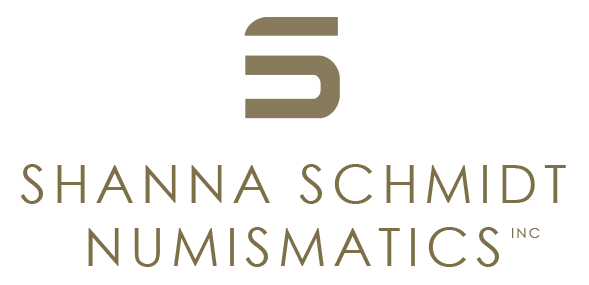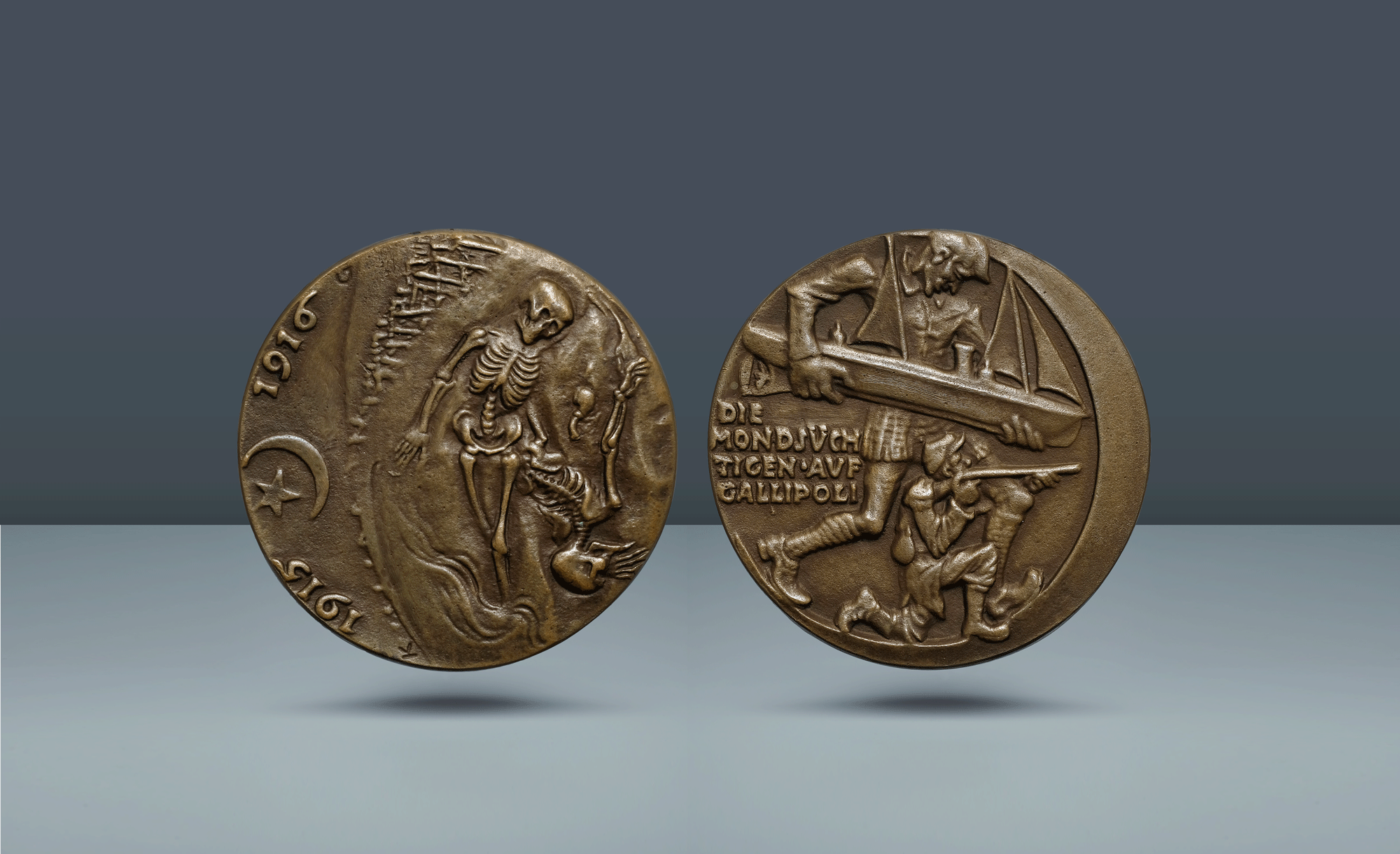GERMANY, German Empire. Medal of Karl Goetz. Wilhelm II, 1888-1918 , 1916
GERMANY, German Empire. Medal of Karl Goetz. Wilhelm II, 1888-1918 , 1916
Cast Æ Medal, 61.85g (57mm, 12h).
The End of the Gallipoli Campaign, 9 January 1916. - Karl Goetz. DIE MONDSÜCH/TIGEN · AVF/GALLIPOLI (The Moonstrucks on Gallipoli), British soldier standing right on crescent moon, holding steamship; below, French soldier kneeling right, preparing to fire rifle / Two skeletons lying exposed on battlefield; pipe between; crosses stretching backward along horizon above; K G to left and right; star-in-crescent flanked by 1915 and 1916
Pedigree: From the PS Collection of Medals of the Great War
References: Kienast –, but see p. 156, op. 169.
Grade: Light brown surfaces. As made.
wc1218
Scroll down for more information about this coin.
The Gallipolli conflict occurred February 19, 1915 until January 9, 1916 on the Gallipolli peninsula, modern day Gelibolu. The conflict pitted the Entente (Russia, Great Britain and France) against the Central powers (Austro-Hungarian Empire, Ottoman, Germany and Bulgaria). After almost 1 year of fighting and 450,000 troops perished, the Central powers held the advantage. This medal illustrates that victory.
Karl Goetz (1875-1950) was a well-known German medalist. In 40 years Goetz created over 600 medals. From 1913-1923 Goetz became widely known for his satirical metals which ranged from nationalistic to ridicule. He later conformed to the National Socialist standard and moved away from Expressionism doing medals of known figures in German history. Aside from a medal during the Weimar Republic in which he satirized Hitler in a negative way, he steered clear of contradicting the National Socialist party.

